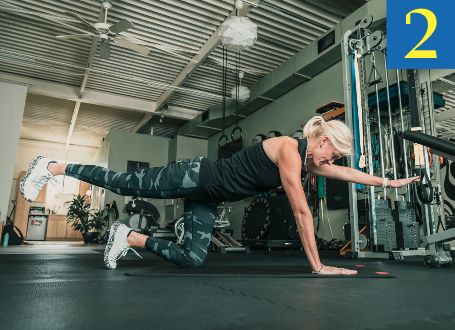Last Updated on April 3, 2025
There are a few no-brainers when it comes to aging and preventing falls is one of them. Falls are the leading cause of injury-related death among adults aged 65 and older in the United States. According to the Centers for Disease Control and Prevention (CDC), more than 37 million adults 65+ suffer preventable falls every year resulting in over 3,000,000 injuries, 800,000 hospitalizations, and 37,000 deaths.
→ 1 in 4 adults 65+ fall every year
→ 1 in 5 falls cause serious injury
→ More than 95% of hip fractures are caused by falling
→ 40% of adults who suffer a hip fracture end up in a nursing home, 20% are never able to walk again, and 33% die within 12 months
→ Falls are the most common cause of traumatic brain injuries (TBI)
→ 60% of all falls happen in the home
→ Treating injuries caused by falls will cost over $100 billion by 2030
Even the prospect of falling extracts a devastating toll on quality of life. Most older adults, fearing a fall, limit their activities and social engagements. This can lead to physical decline, social isolation, and depression.
Unfortunately, almost all balance and falls prevention programs are geared exclusively toward the elderly. These are important and necessary programs but are about 2 decades too late for many.
At Growing Bolder, we believe balance and falls prevention should be a regular part of every adult’s health and fitness routine. It should begin before we need it so that balance, and the strength associated with it, is an asset that we carry into our older years. That’s why we’re starting the Growing Bolder Balance Program. This is a work in progress, but it begins in this issue with several balance exercises demonstrated by fitness expert and certified personal trainer Trish Chard Walsh. These are exercises that anyone can quickly and easily do at home without any special equipment.
Falls, and their devastating consequences, are common, costly, and preventable. That’s why beginning a balance program before you think you need it is one of Growing Bolder’s aging no-brainers.

Standing Leg Raise
→ Find a kitchen counter or chair or other stable surface to balance on.
→ Stand with your feet shoulder width apart, nice and flat, with both hands on the counter, or a stable surface.
→ Raise your leg up with your knee bent, and hold that for 5 to 10 seconds.
→ If you can try and not hold on, that’s obviously going to test your balance a little bit more.
→ If you can’t get to 10 seconds, start out with 3 to 5 seconds.
→ Lower that leg and repeat on the other side. Suggested Frequency: 3 to 5 times a week.
Bird Dog
This is a great exercise for balance because it’s helping to strengthen your core.
→ Get on your hands and knees on the floor.
→ Begin by raising one leg, and then you’re going to raise the opposite arm out in the front.
→ Hold that pose for about 3 to 5 seconds, then lower both back to the mat, and repeat on the other side.
→ Engage your core while you’re doing this by pulling your belly button in towards your spine. Suggested Frequency: 10 reps on each side, 3 times a week
Side Leg Raise
→ Find a stable surface, such as a kitchen counter or table and stand with your feet shoulder width, with both hands on that stable surface to help keep you balanced.
→ Lift your leg out to the side, hold for 3 to 5 seconds and then lower that leg.
→ Repeat on the same side for a total of 5 reps on each leg. Suggested Frequency: 3 to 5 times a week
Body Weight Squat
Balance training and strength training go hand in hand with each other, and strong legs are crucial for good balance.
→ Start with your feet shoulder width apart, standing up nice and tall.
→ Lower your legs until your thighs are parallel to the floor while raising your arms out in front of you.
→ Rise back up.
→ Squat back down, pause, then stand back up. Suggested Frequency: 10 reps, 3 times a week
Kettlebell Exchange
This exercise improves your balance by strengthening your quadriceps, because you’re also using your core as well. If you don’t have a kettlebell, you can use a water bottle, a soup can or anything at home.
→ Place the kettlebell in both hands and stand with your feet shoulder width apart.
→ Move the kettlebell to one hand, place one foot in front, then slide your other foot back, so you’re just balanced on your toes.
→ Exchange the kettlebell back and forth between your hands, all while trying to stay stable on that front leg.
→ Make 5 to 10 exchanges, then stand back up and repeat with the opposite foot forward.
Suggested Frequency: 3 times a week
This article is featured in the January 2023 issue of The Growing Bolder Digital Digest.















